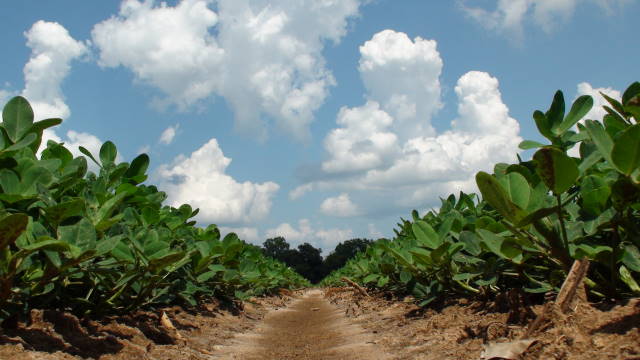
Peanut farmers will have a new leaf spot fungicide option available soon from Syngenta called Miravis.
Syngenta has successfully completed the registration process with the Florida Department of Agriculture for a new fungicide for Florida peanut farmers called Miravis. Miravis is the brand name for Syngenta’s fungicide with the active ingredient Pydiflumetofen, which is a group seven fungicide product.
The following key information is provided on the Miravis label for use in peanut production:
Miravis is a broad-spectrum, preventative fungicide for use in the control of many important plant diseases. In peanuts these diseases include: Early leaf spot (Cercospora arachidicola), Late leaf spot (Cercosporidium personatum), Pepper spot (Leptosphaerulina crassiasca), and Web blotch (Phoma arachidicola) with supression of Sclerotina Blight (Sclerotina spp.) when applied prior to disease development at the recommended rate of 3.4 oz/acre. Miravis may be applied by ground, air, or chemigation, with a pre-harvest interval (PHI) of 14 days.
Dr. Bob Kemerait, University of Georgia Extension Plant Pathologist provided some highlights from his research of Miravis use in peanut:
By all accounts, Syngenta is ready to launch Miravis fungicide for peanut growers this season. There will be a very limited supply for the tri-state area (Georgia-Florida-Alabama) in 2018, perhaps enough to treat between 100 – 200 thousand acres.
Here are a few key points:
- Miravis is in the “SDHI” (succinate dehyrdogenase) class of chemistry, which also includes fungicides like Convoy (flutolanil), solatenol (a component of Elatus), fluopyram (Velum) and fluxapyroxad (a component of Priaxor). The SDHI class is quite variable and diverse.
- The mode of action of SDHI fungicides is to disrupt electron transport in the mitochondria of the fungus, thus depriving the pathogen of ATP and energy.
- The SDHI class is diverse, but not all things all the time. For example, flutolanil (Convoy) is excellent on white mold but does not touch peanut leaf spot diseases. MIRAVIS is excellent for control of leaf spot diseases, but does NOT control soilborne diseases like white mold or Rhizoctonia limb rot, or peanut rust.
- Because MIRAVIS is excellent on leaf spot diseases, but not used for soilborne disease control, Syngenta will promote use as a tank-mix with Elatus; thus providing strong, broad-spectrum disease control.
- Syngenta has collaborated with researchers and Extension from UGA, UF/IFAS, Auburn, Clemson, and other land-grant institutions to develop Miravis for use on peanuts. Because of this, we have significant experience with the product.
- Currently, a MIRAVIS/Elatus program from Syngenta is a 5-spray program. The MIRAVIS (3.4 fl oz/A) is mixed with ELATUS (9.5 fl oz if applied twice or 7.3 fl oz if applied three times in the season) at approximately 50 and 80 days after planting.
- The other two (3-Elatus program) or three (2-Elatus program) fungicide applications are something like chlorothalonil or Alto/chlorothalonil applied at 28, 104 and 120 days after planting.
- Fungicide resistance management is especially important for Miravis because of mode of action and reduced sprays (5 versus 7 in a “typical” program
- As of June 21st, there has been no word on cost yet.
- See the Miravis Label for more information.
- 54th Annual Santa Rosa County Farm Tour Goes Virtual - December 11, 2020
- Video Tour of the 2020 Santa Rosa County Peanut Variety Trial - October 9, 2020
- Giant Salvinia – A Highly Invasive Aquatic Plant You Don’t Want Growing in Your Pond - May 29, 2020

